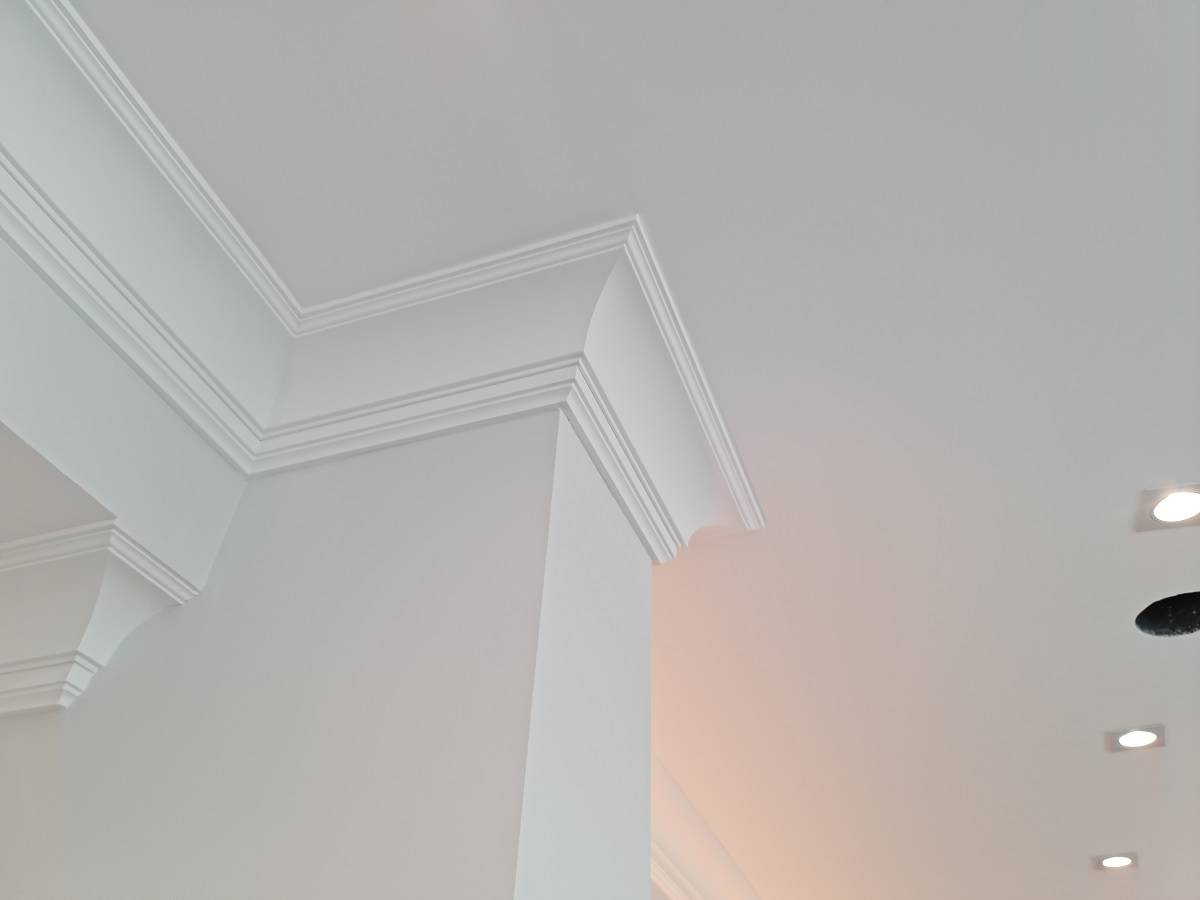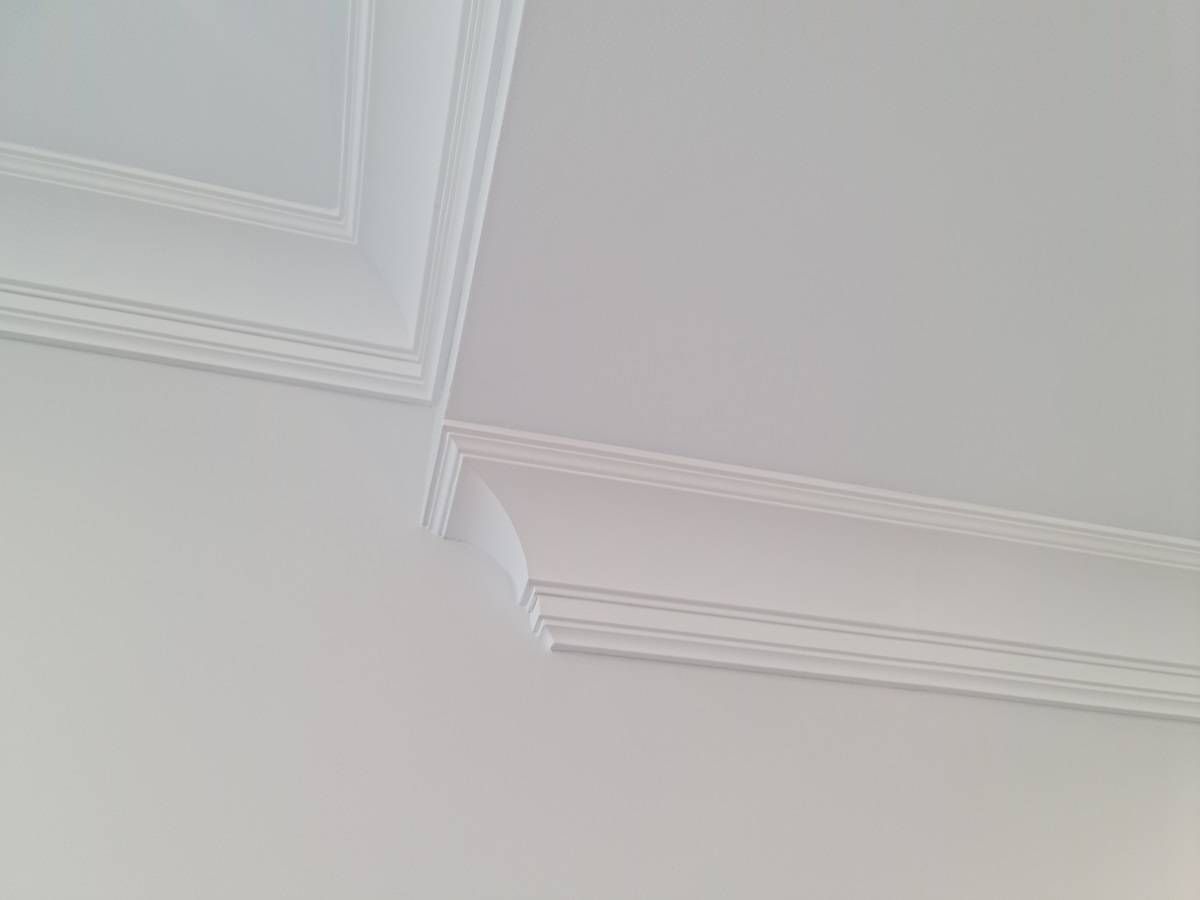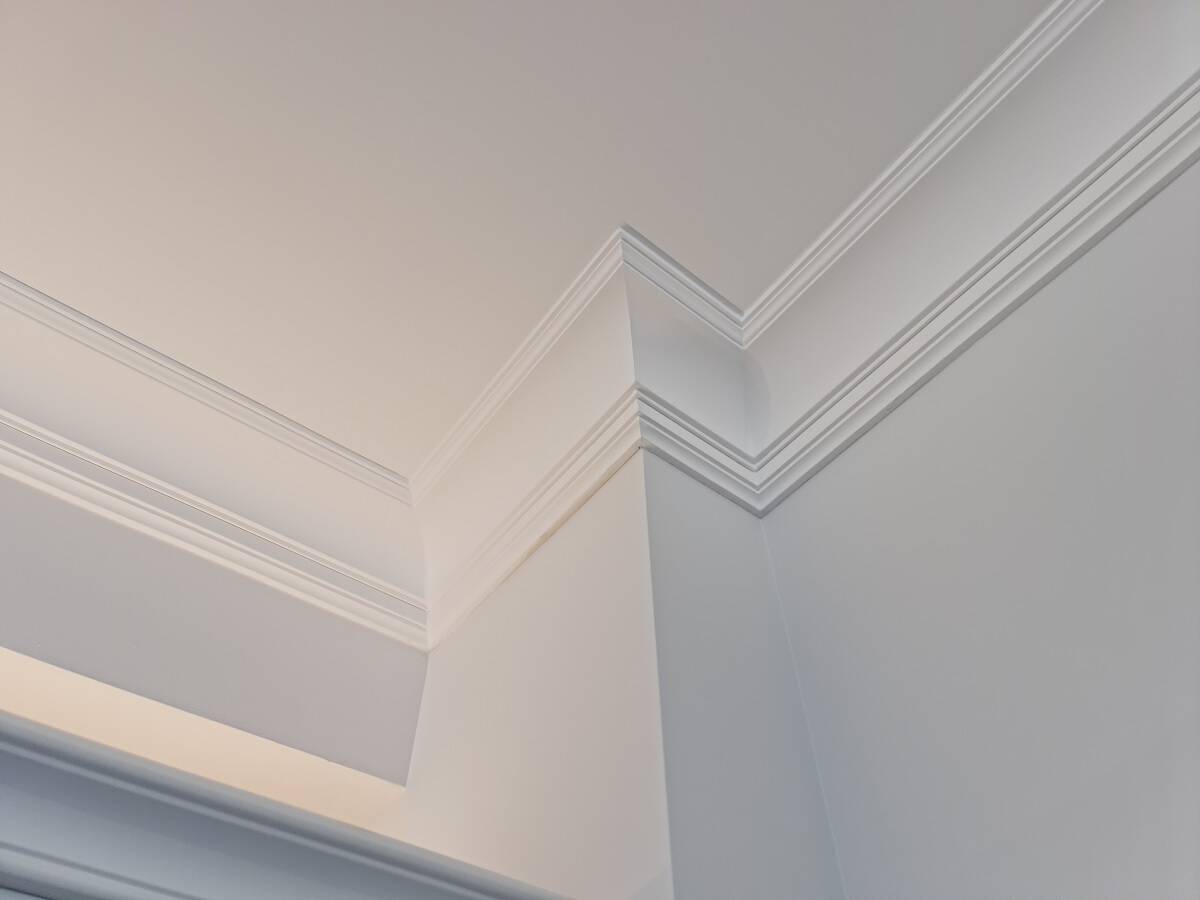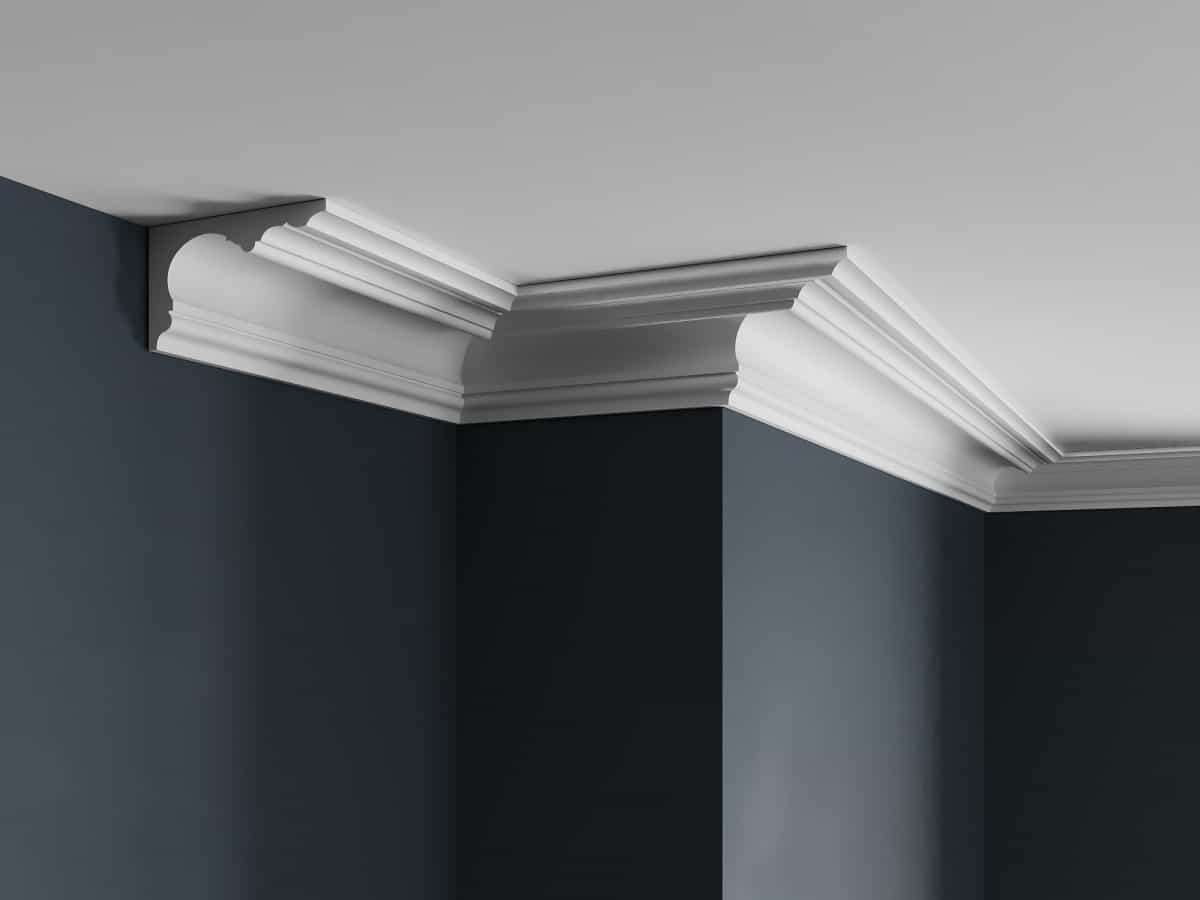How To Fit Coving
How To Fit Coving
How to fit coving and plaster cornicing
This Guide is intended to help a DIY enthusiast in installing / fit Decorative Plaster coving and cornices; however, you should consult a professional if you are unclear about anything in this Guide.


Tools & Materials For Fitting Coving
Saw – a fine tooth wood saw is best. Choose one with a reasonably stiff blade – if it is too flexible it may bend when cutting the plaster coving, resulting in a curved edge making it difficult to obtain a good fit with the adjoining plaster coving length.
Mitre box – ensure that it is big enough for the plaster coving you are cutting. Remember that the cornice is propped against the back plate of the mitre box – a common mistake is to lay the coving “flat” and cut as if it was architrave or a picture frame. The plaster coving is always put in the mitre box “upside down” the edge that will be fixed to the ceiling should be on the base of the box.
Adhesive – Coving adhesive (plaster coving adhesive is recommended for plaster coving/cornicing, available in 25kg bags, use the same coving adhesive to finish the joins and corners too). Ensure the room temperature is above 10°C otherwise the adhesive won’t bond correctly.
Other tools required will be Pencil, ruler, hammer and small nails, sanding sponge & water, filling tool, paintbrush.
Measure and Plan
Cutting plaster coving/cornicing Use a firm, positive stroke of the saw. Don’t try and force the cut or cut too quickly. Hold the plaster coving cornice securely with your non-cutting hand to prevent it slipping or moving in the mitre box. If possible, try and support/raise the other end to the same level throughout so that the coving cornice isn’t sloping along its length.
Installation fitting coving and plaster cornice
If you have any external corners (such as a chimney breast), start with them. Otherwise start at the first corner you see when entering the room (it is always easier to get the 1st corner of the installation correct, so make sure it is the most noticeable corner in the room).

Establish the drop down the wall from the ceiling that the coving will be fixed at, (Key scratch ceiling and wall) and ensure this is clean and sound. Draw a line around the room at this position (or mark at various points). Ensure the line is horizontal – do not be tempted to follow the ceiling which may not be level (if there is any subsequent gap, this can be filled later). At every 500mm or so, tap a small pin nail into the wall as a temporary supporting guide (for extra support apply wood screws in to the cornice if necessary for better support). (The small nail holes will eventually be covered by the adhesive). For extra adhesion if any gaps, you can score the area between line and the ceiling. Optionally, repeat this process on the ceiling. Now, carefully measure along the wall the length you need- then measure it again! Transfer these measurements to the coving, and if it helps, also mark a line in the direction that the cut will roughly be, so that when put in the mitre box you can be assured you are cutting in the correct direction.
Make the cut, and then check if you are happy that the 2 sections meet ok. Don’t worry if they do not meet perfectly – not many rooms have corners that are exactly 90°, so a perfect join is rare. You can try to trim a bit on either side corners using the saw’s front tip to eliminate the gap; it will help finishing the corners after very easily. Using Coving adhesive or drywall adhesive, apply along the entire length of the back edges of the plaster coving where it will meet the wall and ceiling. As a rough guide to coverage. Using the line on the wall as a guide and the nails as a lever, push the plaster coving firmly into place, adjusting as necessary. Now apply a thin layer of adhesive to the end of the coving where it will meet the next piece. This will give an ultra-high strength join and prevent any cracks appearing in the future (if applied correctly, the join will be stronger than the actual coving piece itself).
Repeat the above process around the rest of the room.
Remove any excess adhesive and use it to fill if any gaps- between joins and between plaster coving and wall/ceiling. Use a filling tool and a damp paintbrush to smooth over, followed by a wet sanding
Frequently Ask Questions
Your Coving products are plaster coving or from plastic
Many customers asking to know the difference between the plaster coving we sale and the one they sell at D I Y stores or similar.
Coving Shop Ltd manufactures and provides premium plaster coving using the traditional methods. All premium plaster coving is handcrafted without any mould release agent, so there is no need for oil sealers or primers when the coving is installed and ready to be painted. Instead only one coat of ceiling paint is required. It is perfectly made to a ninety degree angle so it fits easy by making invisible joints. Also this makes the installation process very easy and suitable down to a handyman. Plaster coving bonds to plaster wall or concrete wall nicely without using expensive adhesives and fillers. We also have an installation guide that will help you to make the installation process very simple. Please note our plaster coving and all our plaster products are made in our own coving shop and we are proud to say is – made in Britain. We only use British top quality fine superior gypsum plaster
Admire Your Work
Fitting coving is a satisfying DIY project that can significantly enhance the appearance of your home’s interior. With careful planning, precise measurements, and attention to detail, you can achieve a professional-looking finish that adds charm and sophistication to any room. So, roll up your sleeves, gather your tools, and start your coving installation journey today. Your home will thank you for it!

